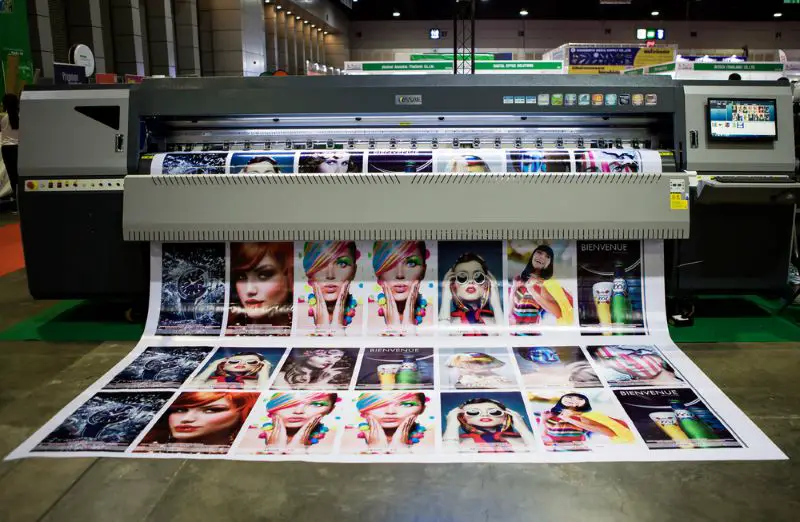Click here to get this post in PDF
Key Takeaways:
- Despite the digital age, print marketing maintains significance due to its tangible and memorable nature.
- Technological advances like augmented reality are transforming print marketing’s capabilities.
Table of Contents:
- Introduction
- Print vs. Digital: A Comparative Analysis
- Incorporating Print in a Multichannel Marketing Strategy
- The Role of Personalization in Print Marketing
- Future Trends in Print Marketing
- Measuring the Success of Print Campaigns in the Modern Era
Introduction
The dawn of the digital age brought about rapid changes in how businesses interact with their audiences. As modern devices’ shimmering screens captivate consumers’ attention, a quiet but powerful player continues to sway in the marketing arena. This player is none other than print marketing, whose legacy dates back centuries and remains a testament to its effectiveness. Engaging with customers through a medium they can touch, feel, and keep has a unique and potent quality that digital platforms struggle to replicate. Even in an age that trends towards all things digital, entities like a well-regarded printing company Denver, illustrate that print marketing is surviving and enriched by modern advancements.
Print vs. Digital: A Comparative Analysis
Digital marketing is celebrated for tracking each click and liking trend with pinpoint accuracy, providing instantaneous feedback and the potential for global reach at lower costs. However, print marketing carves its unique niche by offering a level of permanence that digital messages need to include. This tangible form of marketing can be held, stored, and savored over time, creating a longer shelf life for its message. Moreover, printed materials often have the advantage of a one-time cost, unlike digital platforms, where continuous investment is required for sustained visibility. This complimentary contrast between the transient nature of the digital and the staying power of the printed word makes them formidable allies in a comprehensive marketing strategy.
Incorporating Print in a Multichannel Marketing Strategy
The advent of multichannel marketing has not diminished the relevance of print; instead, it has highlighted its potential to become an even more strategic tool when combined with digital platforms. Marketers recognize that consumers do not engage with media in a vacuum—they seek a cohesive and consistent brand experience across all channels. By aligning print collateral with online campaigns, businesses can extend their reach and reinforce their messaging. Print materials act as a physical touchpoint that can direct potential customers to a digital journey through QR codes or specific web addresses, seamlessly blending traditional and modern techniques for maximum impact.
The Role of Personalization in Print Marketing
One of the most significant trends in modern marketing is personalization—tailoring messages to address the specific needs and desires of the target audience. Advancements in technology have enabled data analytics to become an intrinsic part of print marketing. Marketers can personalize everything from direct mail to custom packaging, providing a unique experience for each recipient. Personalized print materials often see higher engagement rates as they speak directly to the consumer, creating a sense of individual attention and deepening the brand’s connection with its audience. This tailored approach marries the physical appeal of print with the precision of data to deliver high-impact marketing communications.
Future Trends in Print Marketing
As we look to the future, print marketing is poised to embrace cutting-edge technologies that will redefine its role in an increasingly digital world. Innovations like augmented reality (AR) are already beginning to transform the realm of print. AR allows static print media to come alive with additional digital content viewable via smartphone cameras, providing an interactive experience transcending traditional boundaries. Alongside this, the rise of 3D printing presents opportunities for highly customized and tactile marketing materials that can further strengthen the immersive experience of the brand. These technological advancements are set to elevate print marketing to new heights, offering innovative and engaging experiences.
Measuring the Success of Print Campaigns in the Modern Era
Evaluating the impact and success of print campaigns in today’s data-driven marketing environment can be challenging but possible. Metrics for print marketing success may include direct response rates, redemption of coupons or offers found within the materials, increased foot traffic, or a quantifiable boost in brand awareness. Additionally, integrating digital elements into print materials, such as personalized URLs or QR codes, allows tracking engagement and conversions analogous to digital campaign metrics. This cross-media measurement provides valuable insights that inform current and future marketing initiatives.
You may also like: Reasons Why You Should Automate Your Printing Processes
Image source: Depositphotos.com

